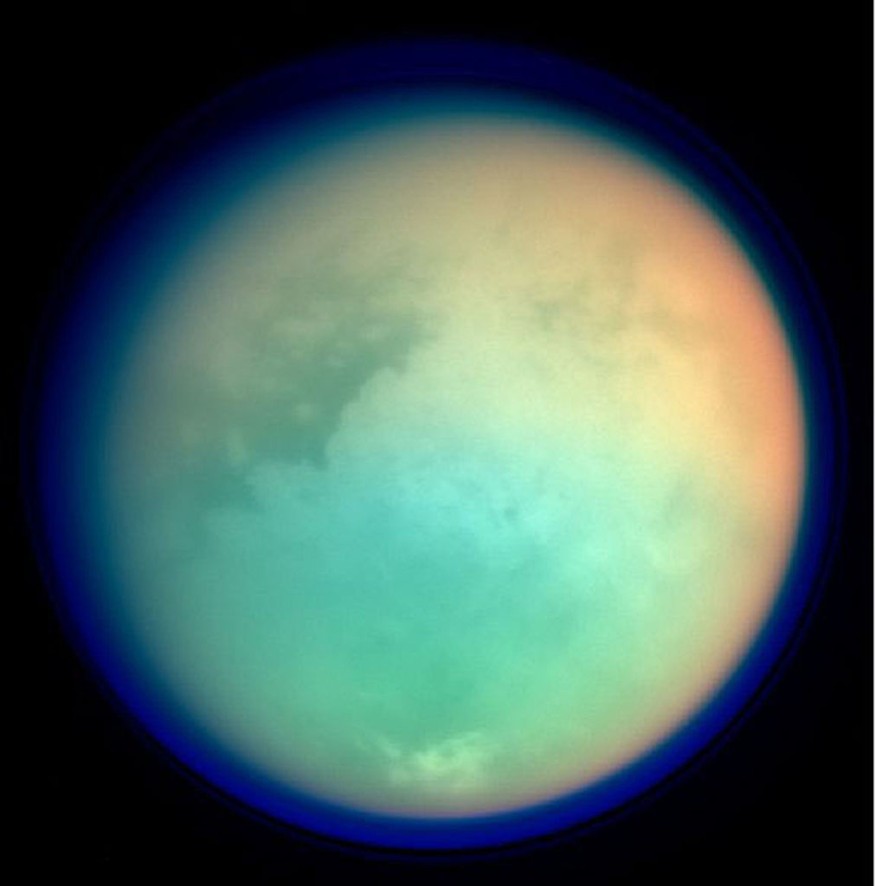Earth is not the only space body in our solar system with weather phenomenon such as rainfall and bodies of water like rivers, lakes, and seas. In fact, Saturn's largest moon, Titan, has these features too but they come in the form of liquid methane and ethane, according to the National Aeronautics and Space Administration (NASA), which also said that an ocean is hiding underneath the said moon.
Titan climate has been found to has Earth-like seasonal weather patterns, according to NASA's James Webb Space Telescope, which shared the first pictures of the moon. The images captured by the probe shows two large clouds in the moon's northern hemisphere, which is the first time to have been spotted. Scientists say this confirms computer model predictions that the moon has seasonal weather patterns.
Titan Seasonal Weather Patterns

For years, scientists have been contesting if weather and climate are only exclusive to Earth and other planets with moons being excluded in the hotly-debated topic. In, particular Earth's Moon has been one of the subjects of such argument; which consists of contradicting theories that our lunar neighbor had an atmosphere or not.
The subject matter of the Moon having a potential atmosphere means it also has weather and climate. Yet, a number of sources depict the Earth's natural satellite as an airless void of nothing since it is very small and has no magnetic field that can produce an atmosphere.
When it comes to Titan, the recent discovery by the James Webb Space Telescope, combined with Earth-bound telescopes, will help astronomers understand the weather patterns on Saturn's moon ahead of a NASA mission to the moon, called Dragonfly, which is scheduled for launching in 2027, according to the University of California, Berkeley.
Titan Climate
In 2016, a study was conducted by researchers from the University of California, Los Angeles' Department of Earth, Planetary, and Space Sciences and the Department of Atmospheric and Oceanic Sciences University of California. It was published in the journal Annual Review of Earth and Planetary Sciences.
Researchers of the 2016 study stated that the Cassini-Huygens mission to the Saturn system over the past decade has revolutionized humanity's understanding of Titan and its climate. In addition, it also noticed its thick organic haze, which was previously theorized to be an active seasonal weather cycle in the moon's lower atmosphere.
James Webb Space Telescope
The James Webb Space Telescope is the largest and most powerful space telescope ever built in the world, allowing scientists to observe the universe of what it was like 200 million years after the Big Bang, the prevailing theory in the origin of the universe.
Also known as JWST, the telescope can capture images of the formation of galaxies and observe objects in our solar system from Mars and beyond. Furthermore, it can also look inside dust clouds to allow us see new stars and planets being born and examine the atmospheres of planets that orbit other stars, according to NASA.
Related Article: NASA Discovers Strange Methane Sea On Saturn's Moon Titan
© 2025 NatureWorldNews.com All rights reserved. Do not reproduce without permission.





